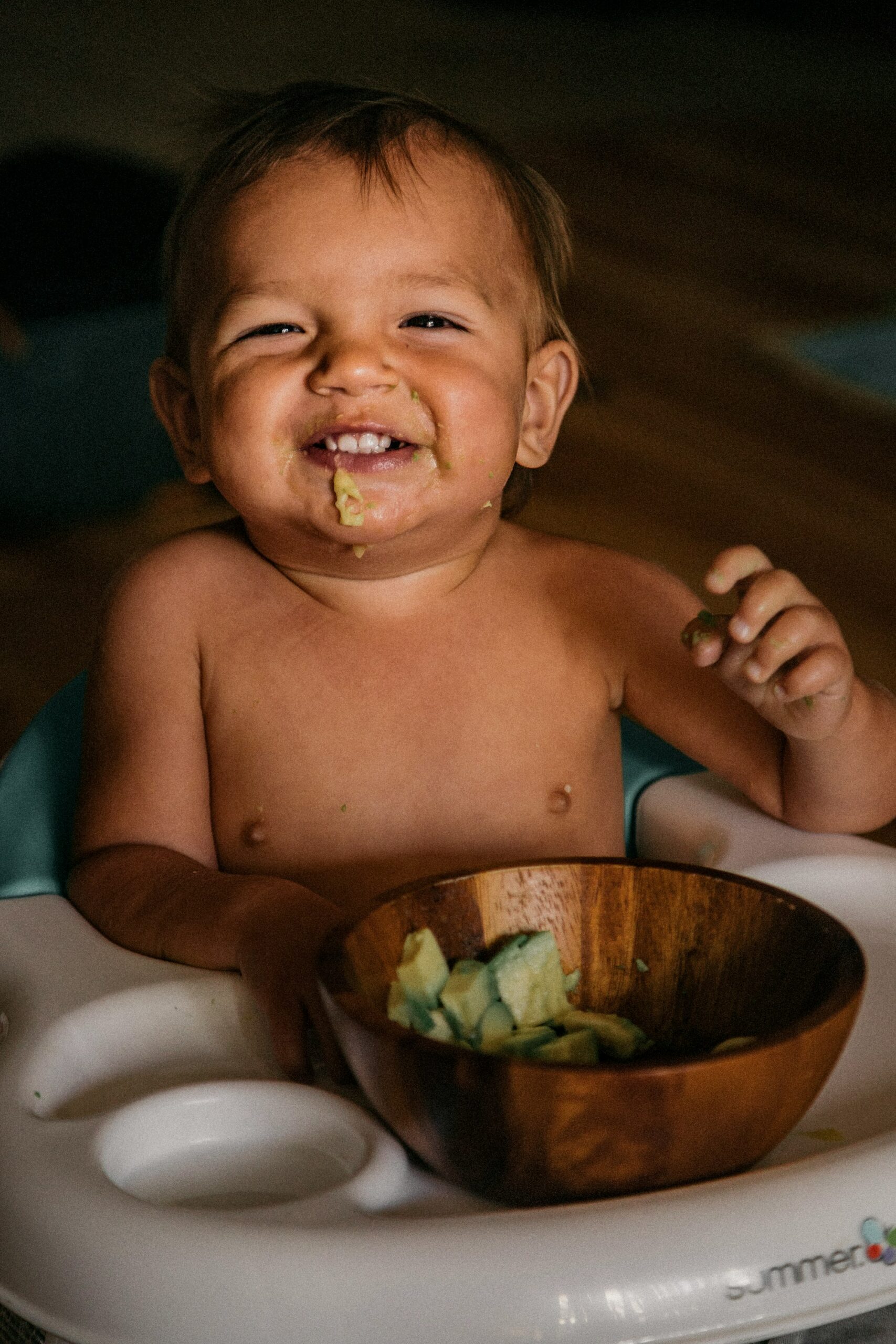Every parent knows the whirlwind of emotions that comes with introducing solids—excitement tinged with uncertainty, hope for happy acceptance laced with worry about nutrition, choking hazards, and messy chaos. Among the multitude of feeding philosophies, baby led weaning stands out for its invitation: let your child’s hands, intuition, and curiosity set the pace. But what lies beneath the smiling photos—the practical realities, the medical safeguards, and that yearning for reassurance that your baby is thriving? Let’s tackle the science, the stumbling blocks, and the sensory delight that makes baby led weaning both fascinating and sometimes divisive. What makes it so talked-about? How do you know if your baby is ready, and are there hidden pitfalls to watch for?
Understanding Baby-led Weaning: Unpacking the Basics
At its heart, baby led weaning is about putting your infant at the center of their own mealtime adventure. Gone are the days of meticulous spoonfuls of pureed carrots. Instead, baby is seated upright (a critical safety milestone, backed by pediatric recommendations) and offered a selection of finger foods—think soft chunks of steamed sweet potato or avocado slices they can grab, squish, and taste at their own pace. No teeth? No problem; strong gums do the work when food is tender enough to mash between fingers.
When can you start? Not before your baby can sit independently, hold their head steady, and reliably bring objects to their mouth—typically around 6–7 months for full-term, healthy infants. The loss of the tongue-thrust reflex signals another green flag, as does that unmistakable fascination with your dinner plate.
But this isn’t a free-for-all. Safety demands vigilance: avoid anything small, round, sticky, or hard. Grapes, raw apples, whole nuts, tough crusts? Off the menu. Pediatricians explain that the trachea (windpipe) in infants is narrow—smaller than a pencil’s diameter—so food must always be large enough for the baby to hold but soft enough to smush with minimal force.
Why Parents Embrace Baby-led Weaning: Benefits for Whole Family
What drives the surge of interest in baby led weaning? For many, it’s the promise of happier, more independent eaters. Babies, offered choices, select foods and regulate their own intake—building self-trust and fine motor coordination (vital for later skills like writing and self-care). The experience isn’t only nutritional; it’s deeply social and sensory.
Shared mealtimes create micro-lessons in communication, familial bonding, and even healthy eating patterns. Imagine your six-month-old, chortling with glee, exploring the texture of steamed broccoli, observing siblings, and trying to mimic grown-up table manners. Research suggests such early exposure to diverse foods—colors, smells, textures—may reduce food aversions and even the risk of picky eating later.
Some studies hint at a lower likelihood of obesity, possibly due to the child’s greater respect for internal hunger and satiety cues. Still, enthusiasm must be tempered by careful consideration: not every baby or family context is the same.
Potential Nutritional Gaps and Medical Concerns
No feeding method is flawless—baby led weaning included. Parents rightfully worry about iron, vitamin B12, and healthy fat intake, all of which are vital for early brain development and robust growth.
Here’s what research shows: infants need iron-rich foods after six months (the body’s reserves from pregnancy begin to drop). If the baby is mostly gnawing on fruit and vegetables, that gap widens. The solution? Regularly include animal-based proteins (soft strips of chicken, scrambled egg, tender flakes of fish) and plant sources like beans, lentils, or tofu—always cut large and soft for safety. For families following a vegetarian plan, foods fortified with B12, legumes, and appropriately prepared eggs can be valuable.
And don’t forget healthy fats. Adding a spoonful of vegetable oil (like rapeseed, walnut, or olive) can boost brain-building omega-3 and omega-6 fatty acids. Beware the salt shaker: infants’ kidneys are immature, and excessive sodium can cause problems subtle but significant, from dehydration to long-term blood pressure issues.
Are you worried your baby seems to prefer the sweet things? It’s natural—humans are hardwired to enjoy sweetness, but offering vegetables and proteins consistently (not just when the baby “seems interested”) ensures a broader palate for the future.
Allergen Introduction: When and How to Proceed Safely
Food allergies—a shadow that looms in every parent group chat. So, does baby led weaning miss the early “window of tolerance,” during which allergies may be less likely to develop? The answer bridges science and practicality.
Research encourages early, repeated exposure to potentially allergenic foods (like peanuts, eggs, dairy) beginning from 4–6 months, especially for families with a history of allergies or infants with eczema. This typically precedes the classic BLW timeline, raising a conundrum: purees may be safer for those early months before full self-feeding skills are established.
A hybrid approach is often optimal: offer pureed or mashed allergens from 4 months if your pediatrician agrees, then transition to the classic baby led weaning foods—still being cautious, introducing new allergens one by one, and observing for reactions. For babies with severe eczema or multiple allergies in the family, medical supervision is paramount, and sometimes mixed feeding is safest.
Feeding Safely: Transforming Mealtimes into Joyful Exploration
Let’s face it—mealtimes can resemble a laboratory, equal parts discovery and chaos. The baby led weaning model insists on constant presence—never leave your child unattended, even for a second. Upright, well-supported seating in a highchair, large and soft foods, and unwavering supervision minimize risks.
Gagging—that dramatic coughing and face-pulling—can be terrifying yet is part of learning to handle solid food. Medically, gagging is a defense, not a danger. Choking, in contrast, is silent and requires first aid. Many hospitals and health organizations offer infant choking courses—well worth the peace of mind.
A tip from nutritionists: stick to easy-grip, soft textures, and expect (embrace, even) the mess. Bibs, splat mats, and patience are your allies.
Practical Guidance: Getting Started with Baby Led Weaning
Imagine your baby reaching for a slice of ripe avocado or a soft-cooked carrot baton—large enough to clutch, yielding enough to mash with the gums. This is the everyday beauty of baby led weaning, but preparation is key.
Begin with:
- One solid meal per day, gradually increasing as your child shows interest and appetite.
- Foods like steamed veggies (big pieces of carrot, broccoli “trees”), soft fruits (banana, pear, peach), and iron-rich proteins (omelet strips, shredded meat, flaked fish, beans).
- Large pasta shapes, soft tofu cubes, and plain full-fat dairy—each supporting a different sensory and nutritional need.
- Feeding after milk or a nap—when your child is alert but not desperately hungry—encourages positive associations.
Worried about food refusal? Most babies signal fullness by turning their head or losing interest. Pressuring them hinders their ability to trust hunger cues. Pediatricians note that appetite may fluctuate from day to day—resist the urge to coax or bribe.
Addressing Common Concerns: Choking, Mess, and Dietary Balance
You may be asking: does baby led weaning increase the risk of choking? Large, independent clinical studies show that with proper food preparation and vigilant supervision, choking events are not more common than with traditional spoon-feeding.
Messiness is an inevitable companion, but this tactile play accelerates learning about texture, smell, and taste. Evidence suggests repeated, pressure-free exposure to new foods is far more successful than forced tasting.
Are you anxious about protein, iron, or calorie intake, especially if your child seems slow to accept certain foods? Combining finger foods with purees or spoon-feeding is no failure—many pediatric feeding specialists recommend this flexible mixing, especially during the gradual introduction of allergens or learning to chew.
Who Should Avoid Baby Led Weaning? Medical Considerations
Despite its appeal, baby led weaning is not the universal solution. Infants who were born prematurely, show developmental delays, or have medical risks (such as severe eczema, suspected food allergies, or specific metabolic conditions) require a tailored, sometimes slower approach. Consulting your healthcare provider before embarking on BLW ensures your child’s unique needs are fully considered.
Some babies may reach motor milestones later, requiring parental patience and professional guidance. An open, honest conversation with your pediatrician lays the foundation for a well-supported feeding journey—one that may blend elements of baby led weaning, purees, or both.
Inspiring, Family-friendly Recipes and Practical Meal Ideas
What can meal planning look like? Baby led weaning thrives on simplicity: think vegetable fries (baked sweet potato fingers, carrot strips), large wedges of soft fruit (banana, steamed apple), or strips of omelet. Soft-cooked pasta, shredded chicken, and tofu cubes fill hungry bellies while supporting healthy development.
For outings or travel, pre-pack steamed veggie batons, soft fruits, or homemade snacks—a ready-made solution to unpredictable restaurant menus.
Always remove salt and sugar when preparing shared family recipes. When in doubt, keep it plain, soft, and large enough to grip securely.
Monitoring Growth and Celebrating Milestones
Tracking your child’s progress—weight gain, new skills (like grasping, chewing, biting), and emerging taste preferences—supports peace of mind and optimal development. Many pediatricians recommend regular check-ups, growth chart updates, and noting new foods or reactions in a simple diary.
Questions about growth, persistent feeding challenges, or possible allergies? There’s no harm, only wisdom, in seeking professional advice.
Key Takeaways
- Baby led weaning empowers infants to self-feed, engage with new textures, and nurture their autonomy—sometimes messily, often joyfully.
- Wait for clear signals of readiness: sitting unaided, lost tongue-thrust, and enthusiastic food interest—typically beginning between six and seven months.
- Balance variety and safety: choose large, soft, easy-to-grip foods; avoid choking hazards; and embrace the inevitable mess as vital learning.
- Mind the key nutrients: iron, B12, and healthy fats support neurological and physical development. “Improved” baby led weaning often blends animal proteins, plant proteins, and added healthy oils.
- Allergy prevention is nuanced: introduce new allergens early, during the tolerance window, if recommended by your clinician—consider combining purees and finger foods as needed.
- Shared mealtimes foster family connection and social learning. Mixed methods are not a sign of failure but of adaptability.
- Health, safety, and parental confidence are supported by ongoing monitoring, engagement with healthcare providers, and a willingness to adapt as your child grows.
Support and guidance are at your fingertips—families seeking trustworthy, tailored advice and childhood health tools can now explore the Heloa app for personalized guidance and free health questionnaires. Empower yourself, embrace the journey, and watch your child’s confidence at the table blossom.
Questions Parents Ask
Can baby-led weaning be combined with breastfeeding or formula?
Absolutely, baby-led weaning works hand-in-hand with continued breastfeeding or formula feeding. Milk remains an essential source of nutrition for babies under one year old. Solid foods, whether finger foods or traditional purees, are offered “in addition” rather than “instead of” milk. The approach lets your child explore and enjoy new textures and flavors, while still receiving all the comfort and nutrients from milk feeds. Many families notice that as babies gradually eat more solids, their intake of milk decreases naturally—chaque bébé avance à son propre rythme.
Are there foods to avoid during baby-led weaning besides choking hazards?
Yes, there are some foods best left off the menu in early months, beyond those that may cause choking. Avoid honey before the age of one, as it can carry bacteria that cause infant botulism. Limit added salt and sugar, as babies’ kidneys are not mature enough to handle extra sodium, and a preference for sweet foods can set in early. Certain fish high in mercury, such as swordfish or shark, are also not recommended for young children. For cheeses and dairy, stick to pasteurized products to reduce any risk of infection.
How do I know my baby is eating enough with baby-led weaning?
It’s reassuring to remember that appetite can vary from day to day. In the beginning, much of the food might end up on the floor or mashed in tiny hands, and that’s entirely normal. Signs your baby is getting enough include steady weight gain and plenty of wet nappies. Babies usually show clear signals of fullness by turning away or losing interest in food. Trust this process and allow them to lead at their own pace; it’s rare for a healthy baby with access to milk and a variety of foods not to meet their needs. If you ever feel unsure, your healthcare provider can offer reassurance and check your child’s growth.
Further reading :









